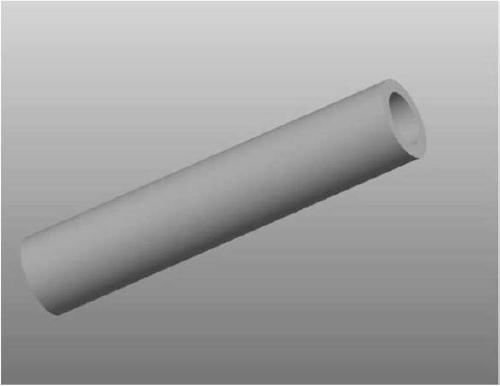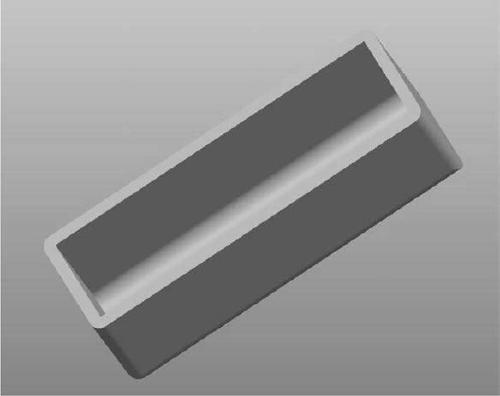A debinding and sintering process of 3D printing ceramic body
A ceramic body, 3D printing technology, applied in the field of additive manufacturing, can solve the problems of complex origin of clay minerals, uneven composition, plasticity, thixotropic bonding, shrinkage and refractory differences, etc., to achieve good surface quality. , The effect of uniform size shrinkage and excellent mechanical properties
- Summary
- Abstract
- Description
- Claims
- Application Information
AI Technical Summary
Problems solved by technology
Method used
Image
Examples
Embodiment 1
[0031] Using stereolithography to print alumina ceramic tubes, the solid content of the ceramic body is 60%, and the size of the ceramic tubes is 12mm in outer diameter, 8mm in inner diameter, and 60mm in length, such as Figure 1a shown. Select amorphous alumina powder, in a boat-shaped alumina crucible (such as Figure 1b As shown) spread a layer of alumina powder on the bottom, then put the ceramic tube blank into the crucible, fill the ceramic tube with alumina powder, and then bury the ceramic tube blank in the alumina powder, as figure 2 shown. Place the boat-shaped alumina crucible in the muffle furnace, close to the position of the furnace thermocouple. Raise the temperature to 200°C in 7 hours, then raise the temperature to 500°C in 10 hours and keep the temperature for 1 hour, then raise the temperature to 1100°C in 20 hours and keep the temperature for 4 hours, and finally cool with the furnace, the atmosphere is air atmosphere. After cooling to room temperature,...
PUM
| Property | Measurement | Unit |
|---|---|---|
| size | aaaaa | aaaaa |
Abstract
Description
Claims
Application Information
 Login to View More
Login to View More - R&D
- Intellectual Property
- Life Sciences
- Materials
- Tech Scout
- Unparalleled Data Quality
- Higher Quality Content
- 60% Fewer Hallucinations
Browse by: Latest US Patents, China's latest patents, Technical Efficacy Thesaurus, Application Domain, Technology Topic, Popular Technical Reports.
© 2025 PatSnap. All rights reserved.Legal|Privacy policy|Modern Slavery Act Transparency Statement|Sitemap|About US| Contact US: help@patsnap.com



